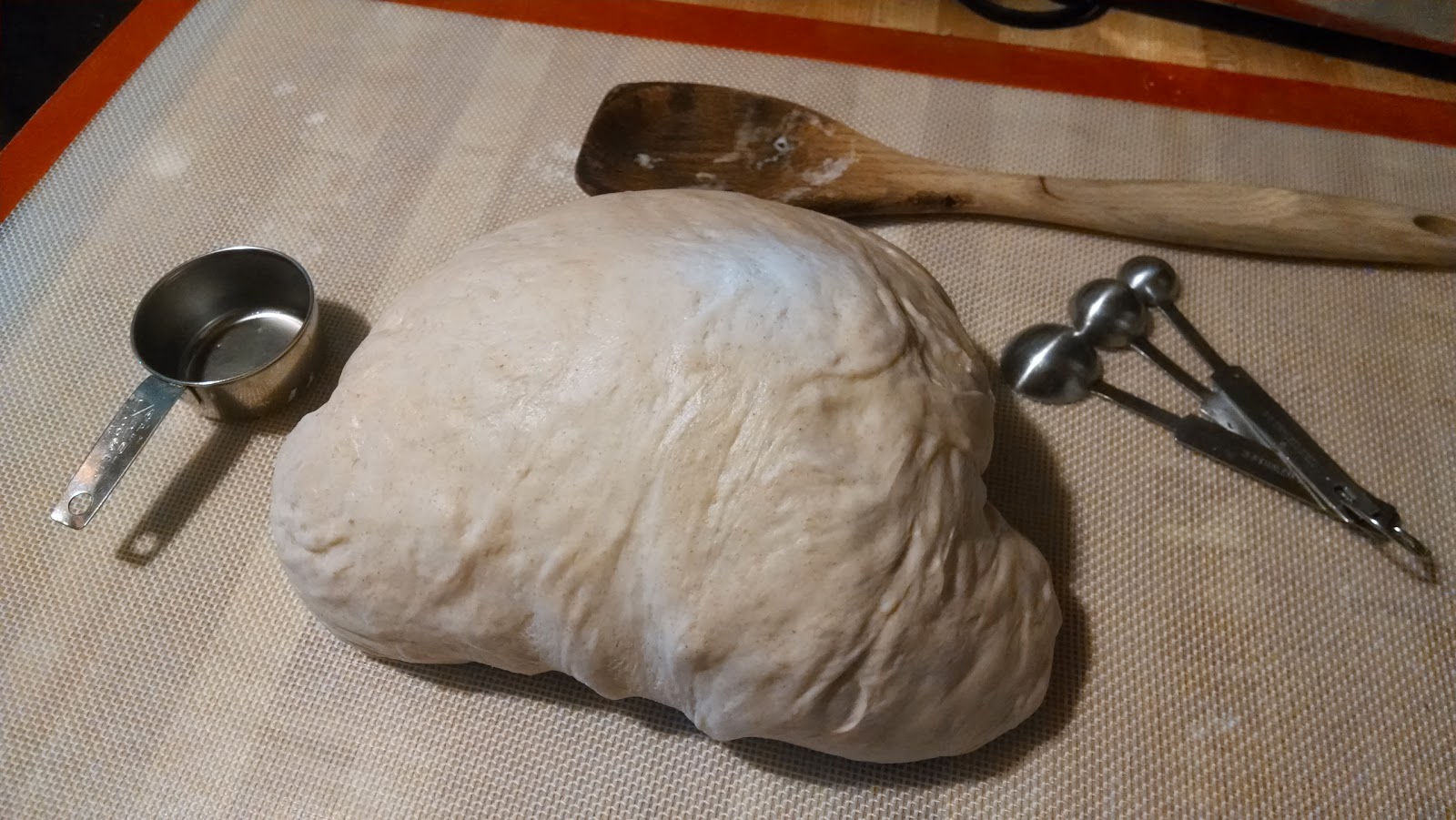Our starters have been growing all term, and it was time to put them to the test using Chad Robertson's Tartine's Country Bread as published in the New York Times earlier this term. The students each baked this bread with a group using the best of their cultivated starters. For our final, I decided to bake two different sourdough breads.
Tartine's Country Bread
This is not a quick bread. The rising and baking time alone (once the starter is active) is 12-24 hours. I was up early with a yowling cat
My starter has come a long way since the I first put the flour and water together.
I added the required water, whole wheat flour and white flour and mixed by hand and let the dough rest for 40 minutes.
Next, I added in the salt and more water and the dough changed completely. It was wet and stringy. I was really worried that it wasn't going to come together and I'd have to start over. However, after just a few minutes, I could feel the gluten forming as I mixed and it went from this mass of dough that would simply not stay together...
...to something that was all integrated and ready for a second 30 minute rest. This time I put it in the oven for a warmer fermentation.
Next, began the process of stretching and folding the dough every 30 minutes over 3 hours. Fortunately, there are pictures to demonstrate what this folding looks like.
I even had some help in folding.
After 3 hours of folding, I divided the dough into 2 loaves and let it rest.
Then each round went into a bowl covered a towels dusted with flour for a 5 1/2 hour rise.
Then I baked them in a casserole dish with a lid and then removed the lid to led the crust brown.
The first was a little dark. Although it tastes delicious. It has a perfect texture and an excellent flavor. The holes in the bread all have the sheen we've learned to identify in great bread. This is a great bread recipe.
The second loaf looked perfect. This is the one I took to the final exam. I'm amazed at how different these two loaves tasted! The second one is more sour and the texture is not as fine. I baked it for 5 fewer minutes with the lid off, but I now wonder if the bread really needed that full baking time even if it got a little darker.
I was also impressed by the student loaves today. Each one was different. The flavors, the colors, the textures were each unique. So often in our industrialized world we want a product to be the same time and time again. Familiarity is nice. However, it's not as fantastic as eating and comparing nine loaves of bread and homemade butter and homemade jam! I'm so impressed with the products and the learning that went into understanding the science of how to bake a loaf of bread.
A Inadequate Comparison--Bread Maker Sourdough
I also baked a second loaf based on a conversation from the end of the term. In our last regular Bread 101 class session, we looked at the energy requirements for production of wheat and bread. It is in fact quite complicated to calculate how much energy is required to grow, process, and ship wheat and all the steps in production of bread. A blog entitled "100 Days Without Oil" presented was a graph and calculations about energy usage to bake bread in various methods with a bread machine listed as the lowest energy usage to bake a loaf of bread.
We've had a bread machine for many years, which we've used off and on. It's quick and easy to use, but the final products are not the same as traditional oven baked bread. They're fine right out of the machine, but quickly lose their appeal. I used the bread maker to bake the recommended sourdough recipe for a comparison with the Tartine Country Bread. I started this loaf when my Tartine bread had been going for 3 hours. This bread was completed more than five hours before the Tartine loaf.
This recipe instructs to add the starter (mostly for flavor and yeast for rising according to the recipe) and water
followed by sugar, oil, flour, salt and yeast.
The container goes into the machine for a fascinating 20 minute kneading session.
I'm always concerned that the dry ingredients will not get mixed into the wet.
The whole program is set for 3 hours 10 minutes including kneading, 2 rises, and baking.
Loaf ready for the first rise.
The final product looked ok, but the taste and texture were bland and crumbly! Fresh from the machine the breadmaker bread has tasted fine, but I haven't discovered a recipe that holds up after a few days. Forty-eight hours after baking it wasn't worth eating.
Bread reflections
We asked the students today what big lessons they learned about bread this term. Beyond great experience with co-teaching an interdisciplinary course, my biggest lesson about bread is about patience. I have not had success baking breads because I haven't been willing to give the bread the time to ferment, rise, and really develop. Twenty four hours to develop and break down gluten makes a much better product than 3 hours quick to finish bread. The Tartine Country Loaf is a labor of love and worth it in every single bite!




















The side by side comparison between the artisan loaf and bread maker product left little doubt as to which is worth baking. Great post and a great term!
ReplyDelete